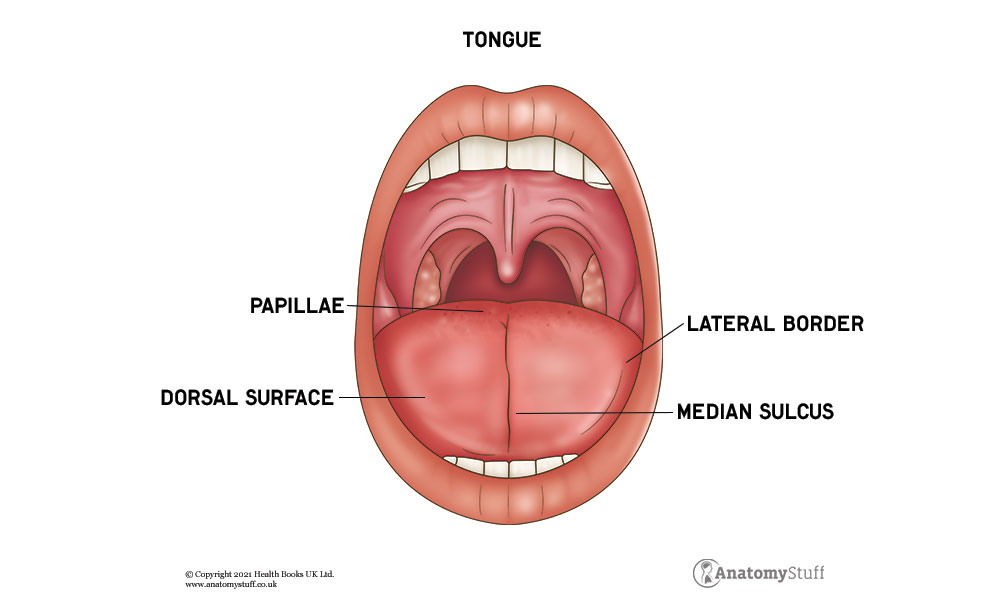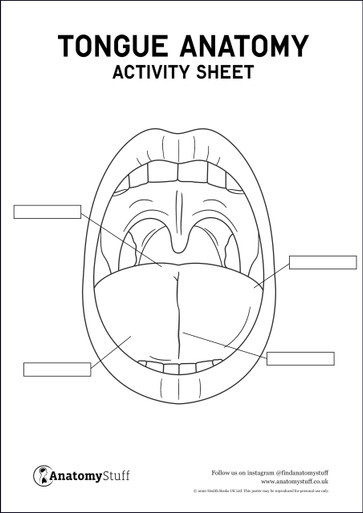Written by: Liz Paton, MSc
Tongue Anatomy Overview
Your tongue is the muscular organ in your mouth that plays a major role in everyday life. It enables you to chew, taste, and swallow your food and express yourself through speech.
Anatomy of the Tongue
The tongue is an organ made up of muscles which are interwoven, striped muscles and glands, interspersed with fat. The tongue is covered by a mucous membrane and attached to a number of bones, including the hyoid bone at the back of the throat, the epiglottis by three folds of the mucous membrane, and the pharynx by extrinsic muscles and the soft palate. The tongue is attached by the frenulum at the midline to the bottom of the mouth. The sublingual caruncles are small prominences that drain away saliva from the major salivary submandibular glands. The posterior pharyngeal part of the tongue is around one-third of the full length of the organ and is closest to the throat. The anterior oral part of the organ is the visible part of the tongue. The terminal sulcus is a v-shaped groove which divides the anterior and posterior parts. The left and right sides of the organ are divided by the lingual septum, vertical fibrous tissue along the length of the tongue apart from the very back of the throat. The rough texture of the tongue comes from several small bumps called the papillae which are covered by thousands of taste buds.
Muscles of the Tongue
The tongue consists of groups of extrinsic and intrinsic muscles.
The extrinsic muscles connect from the bone to the tongue and allow for side-to-side movement and bring the tongue in and out. The genioglossus muscle protrudes and depresses the tongue. The hyoglossus muscle depresses and retracts the tongue. The styloglossus muscle retracts and elevates the tongue and the palatoglosussus muscle elevates the posterior part of the tongue and draws the soft palate downwards.
Unlike the extrinsic muscles, the intrinsic muscles have no external attachments and exist only within the tongue. These muscles are responsible for the shape and size of our tongue and help with eating and speech. These muscles include the superior longitudinal muscle, inferior longitudinal muscle, transverse muscle and vertical muscle; each named after the direction by which they move.
All of the muscles of the tongue except for the palatoglossus muscle are innervated by the hypoglossal nerve (CN XII). The palatoglossus muscle is innervated by the vagus nerve (CN X).
Bloody Supply of the Tongue
The bulk of the tongue’s blood supply comes from the lingual artery which branches off from the external carotid artery. It is also supplied by the tonsillar artery. Venous drainage of the tongue is through the lingual vein.
Sense of Taste
Tongues have on average between 2,000 to 10,000 taste buds which are replaced every two weeks (although some taste cells don’t get replaced in older adults). Most of the taste buds are on the tongue but some are also found in the back of the throat, epiglottis, upper part of the oesophagus and the nasal cavity. There are four basic taste categories: sweet, sour, bitter, and salty. Umami is often described separately from the other basic taste categories and has been described to sense brothy, meaty tastes. Taste buds are made up of receptor cells that are stimulated by food molecules which send messages to the brain to determine the taste.
Free PDF Downloads
View AllRelated Products
View All














